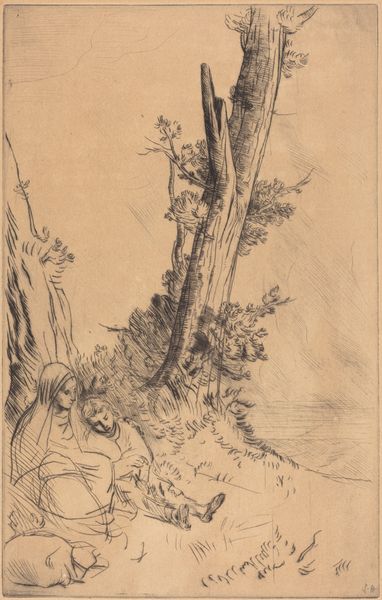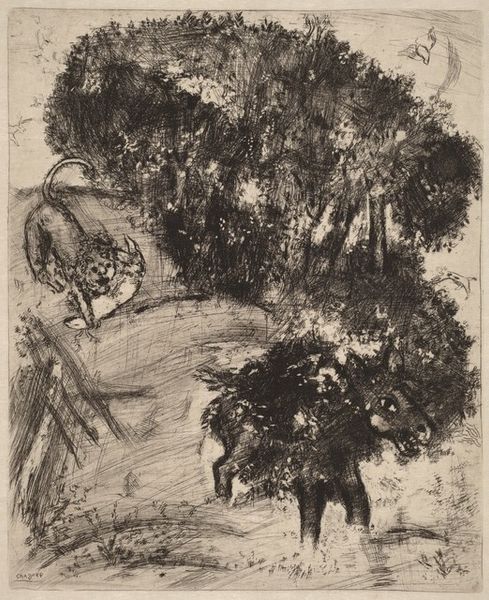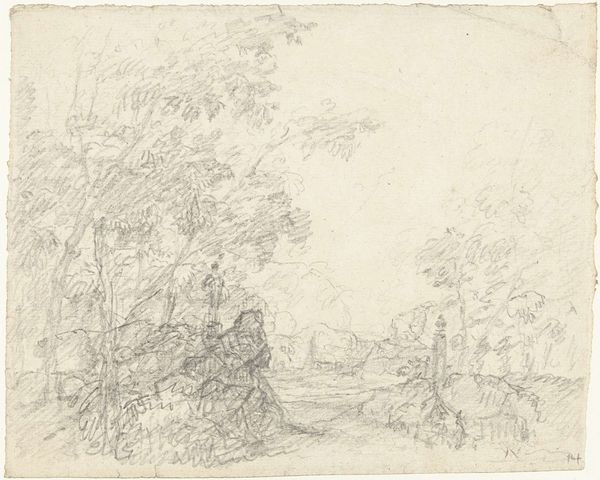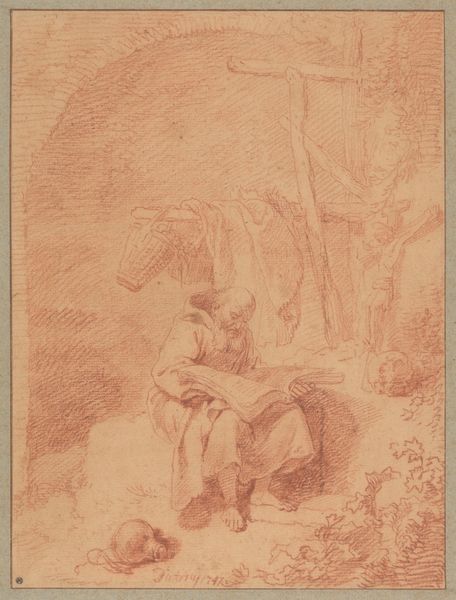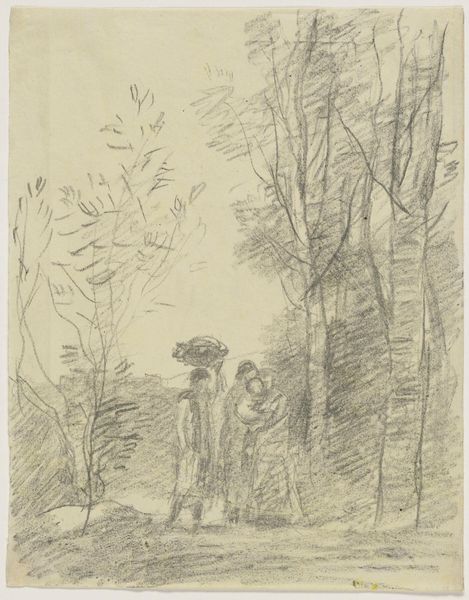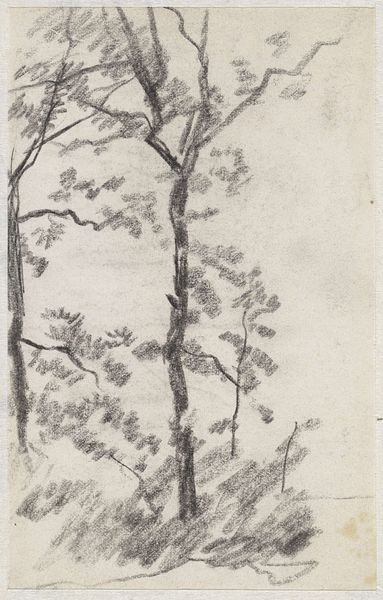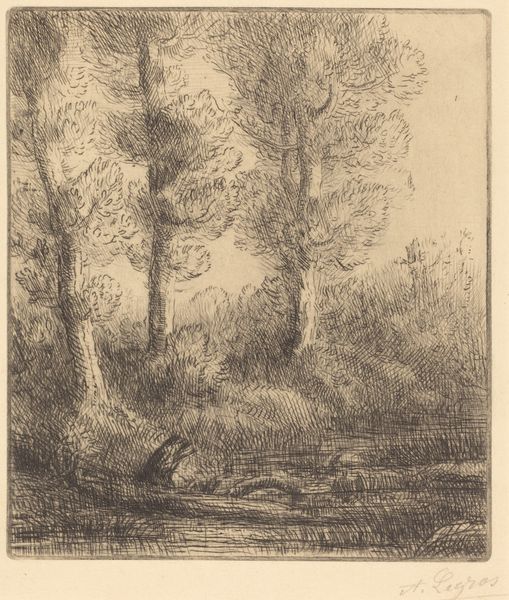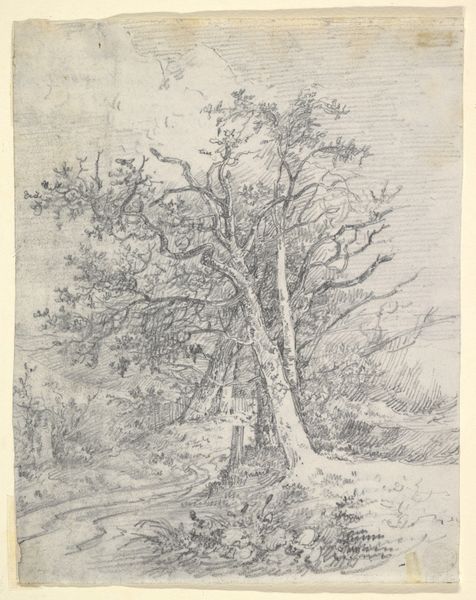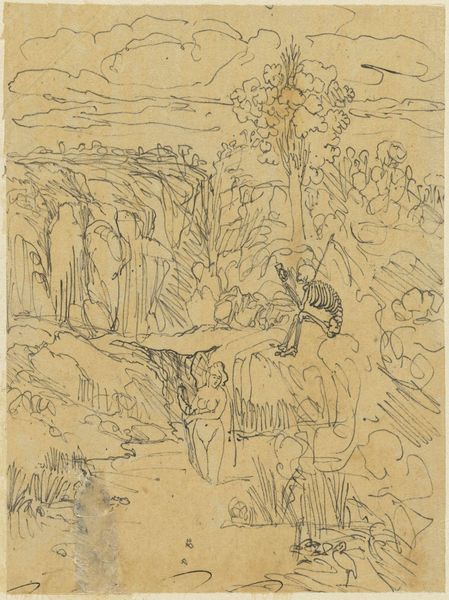
drawing, pencil
#
drawing
#
dutch-golden-age
#
pencil sketch
#
landscape
#
etching
#
figuration
#
pencil
#
genre-painting
#
realism
Dimensions: height 290 mm, width 190 mm
Copyright: Rijks Museum: Open Domain
Curator: Here we have a pencil drawing entitled "Boer met een koe in een heuvellandschap," or "Farmer with a Cow in a Hilly Landscape." Jozef Israëls created it sometime between 1834 and 1911. What are your first impressions? Editor: There's a quiet stillness to it, isn't there? It feels almost dreamlike, this simple, almost primitive pastoral scene rendered with such delicate lines. It evokes a sense of bygone rural life, an almost idyllic memory. Curator: Indeed. Israëls, positioned within the Hague School, played a crucial role in popularizing genre paintings depicting peasant life. Consider the sociopolitical context of the late 19th century, when industrialization was rapidly changing Dutch society. Paintings such as this allowed viewers to reconnect with the perceived simplicity of rural life and idealized notions of "Dutch" values. Editor: The symbolism is so immediate, isn't it? The cow grazing represents nature's bounty. But what's really striking is the figure of the farmer himself, seen from the back. He's present but almost anonymous, absorbed in this environment. Is this a nostalgic glance, or a deliberate placement within the symbolic narrative of rural connection? Curator: That is what many debate about works such as these: is it glorification or observation? I feel that he is shown not with pride or celebration, but simply as an inhabitant of this world, another being going about his life, while we look from afar. Israëls focused heavily on naturalism. He didn’t prettify the realities of the countryside, but captured the quiet solemnity of agrarian toil. Editor: I appreciate how the landscape is sketched in with such quick strokes, contrasting the dark shading of the animals and the figure. This sketch seems to almost cradle the symbols that make up a rural scene. What do you think of the gnarled, aging tree? Its leaves act almost as a curtain between the viewer and the scene, drawing the viewer in with an almost sacred viewing. Curator: You point out something very important. These were designed for display to urban society that, increasingly, saw country life in the way that you described: with reverence and a sacredness that belied the true drudgery of existence. The play of light and shadow adds to the emotional weight. While seemingly simple, it resonates on multiple levels regarding the perception of culture and nature. Editor: A fine point. This image is deceptive, a drawing packed full of meaning regarding nostalgia and rural life. It makes one want to unpack every mark on the paper! Curator: Precisely. I trust listeners will spend the next while contemplating exactly that as they enjoy this image, and muse upon Dutch culture of generations past.
Comments
No comments
Be the first to comment and join the conversation on the ultimate creative platform.
